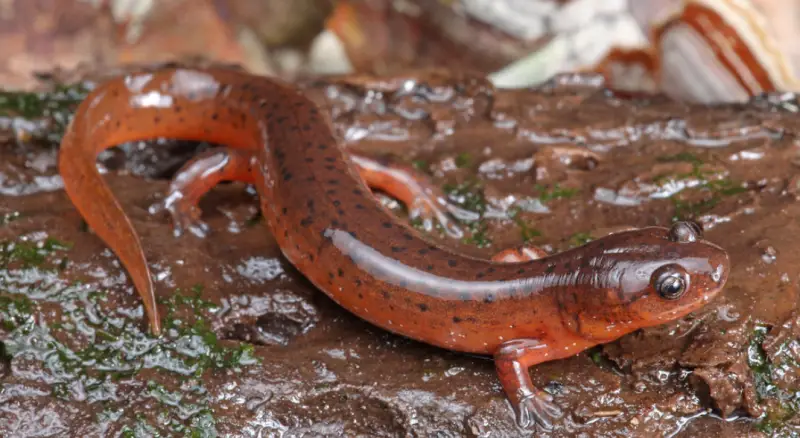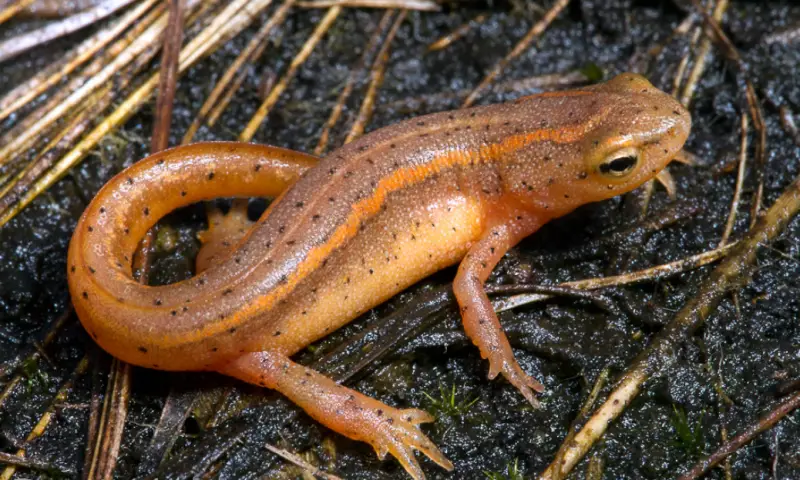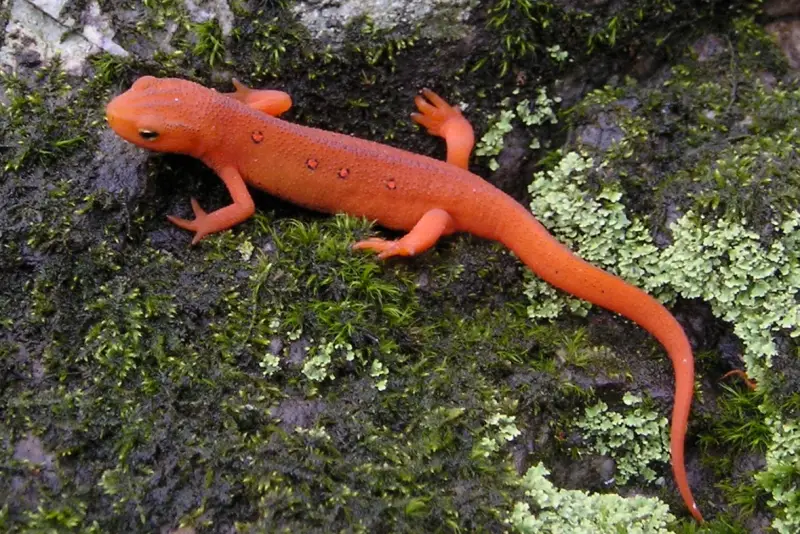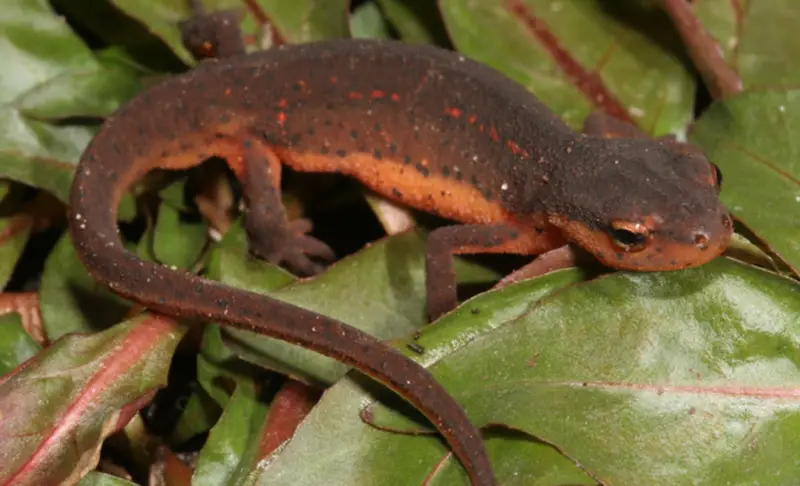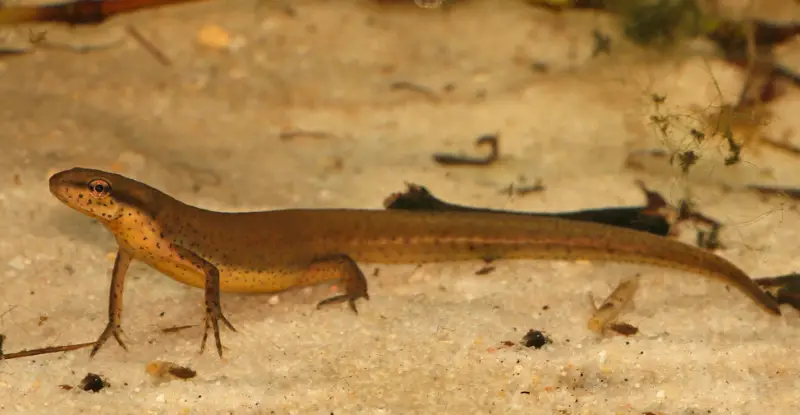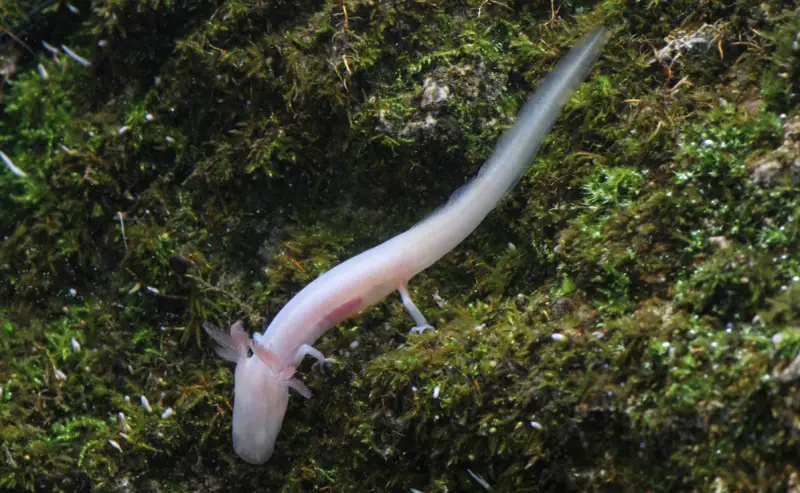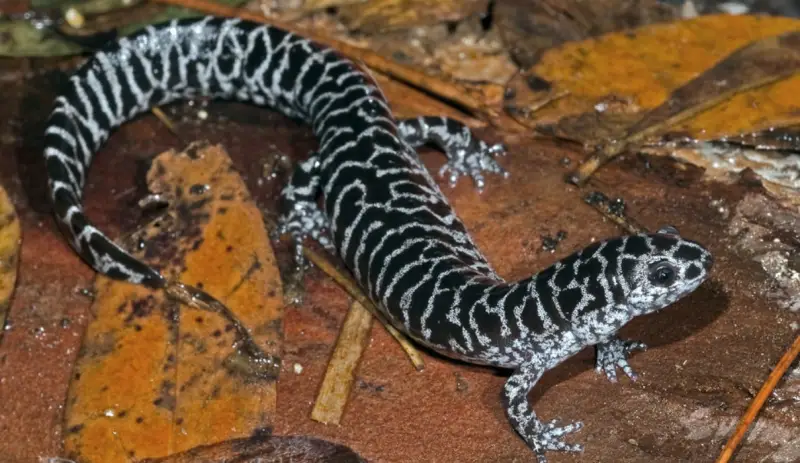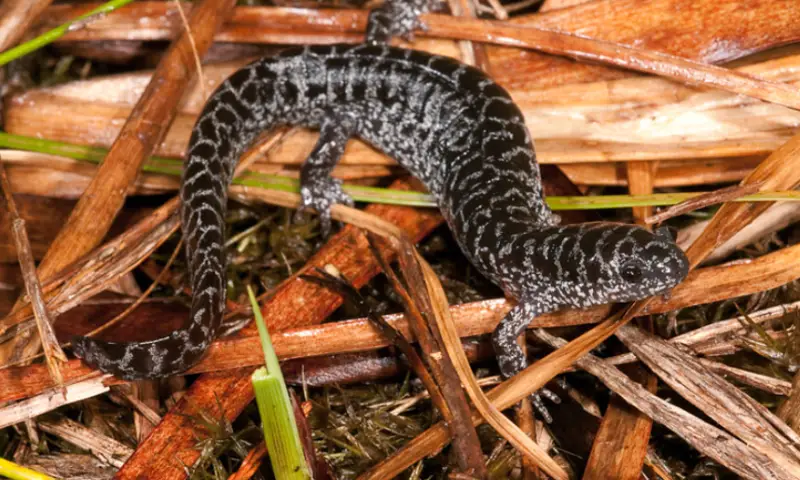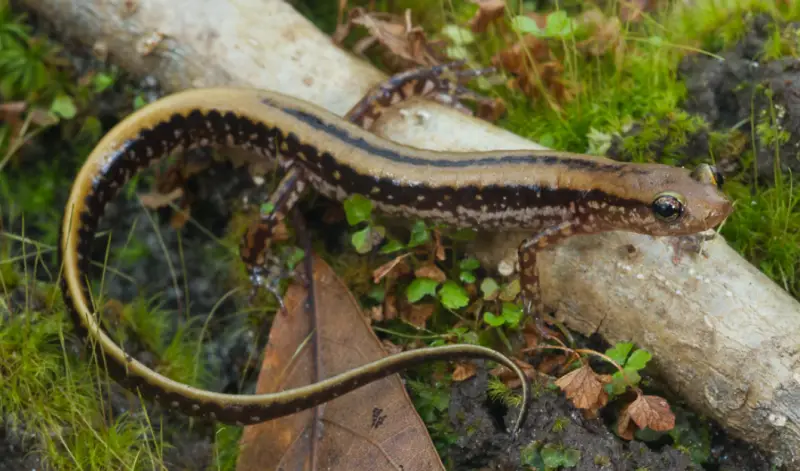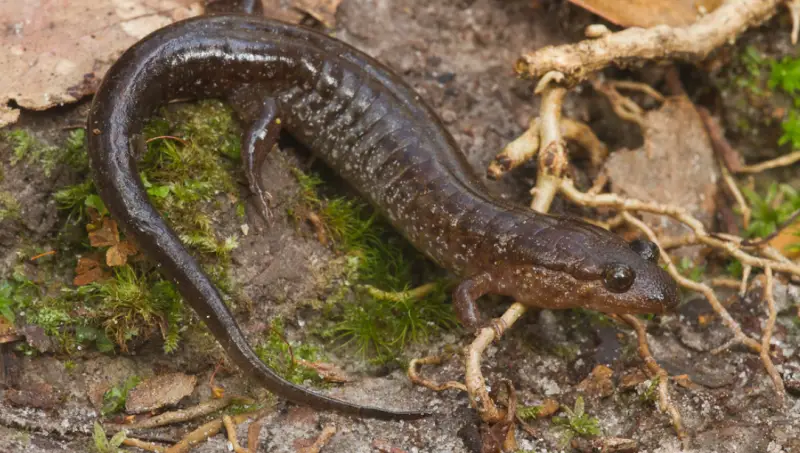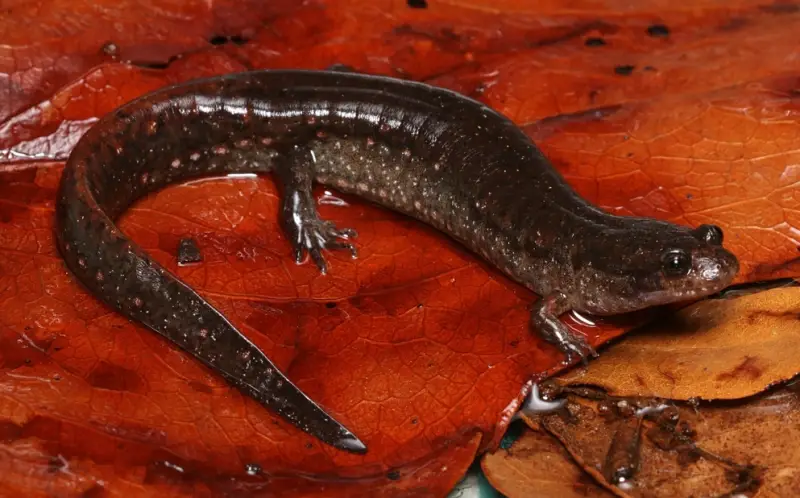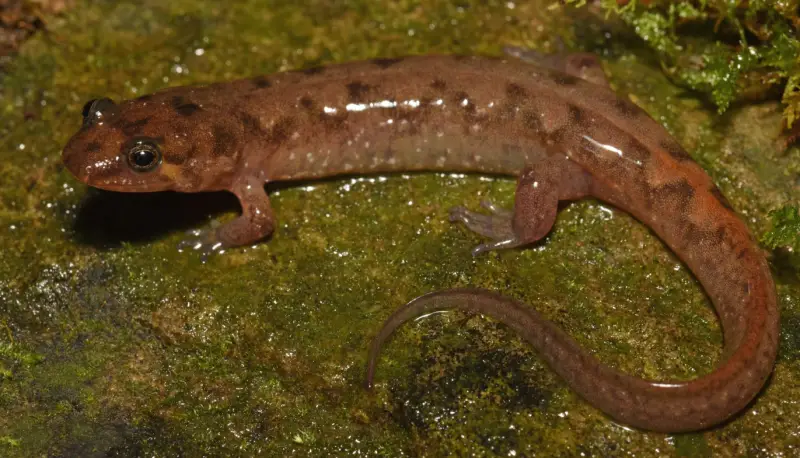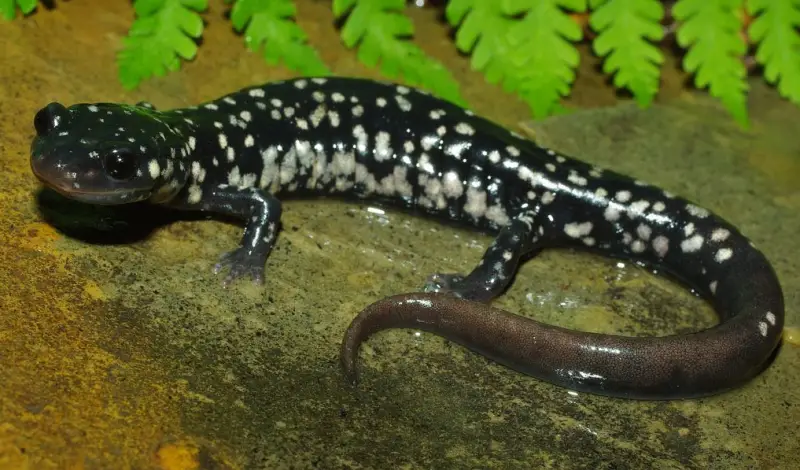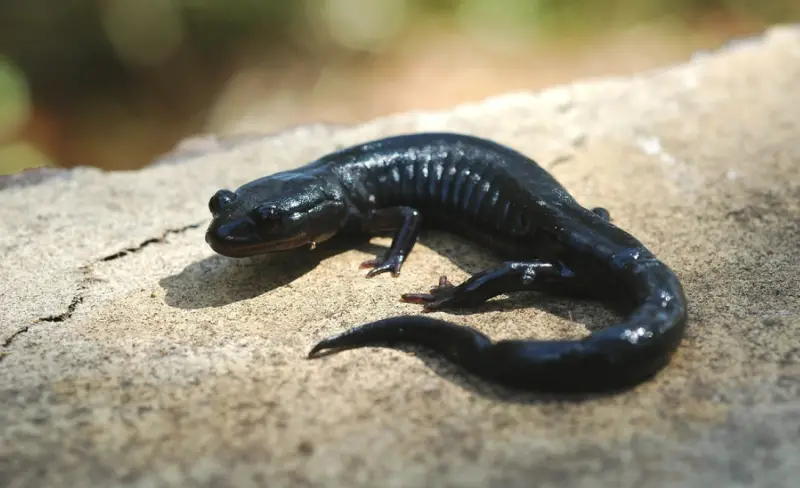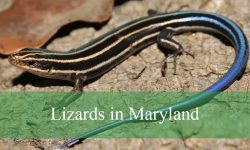Florida is home to a diverse array of salamanders, each adapted to the unique environments found across the state. From the elusive Georgia blind salamander to the striking Peninsula newt, salamanders in Florida are a fascinating group of amphibians.
These creatures thrive in various habitats, including wetlands, forests, and even underground caves, showcasing the rich biodiversity of Florida’s ecosystems. Understanding and preserving these Florida salamanders is crucial for maintaining the state’s natural heritage.
The following article explores 35 species of salamanders that can be found in Florida and how to identify them based on their characteristics.
Different Florida Salamander Species
Red salamander
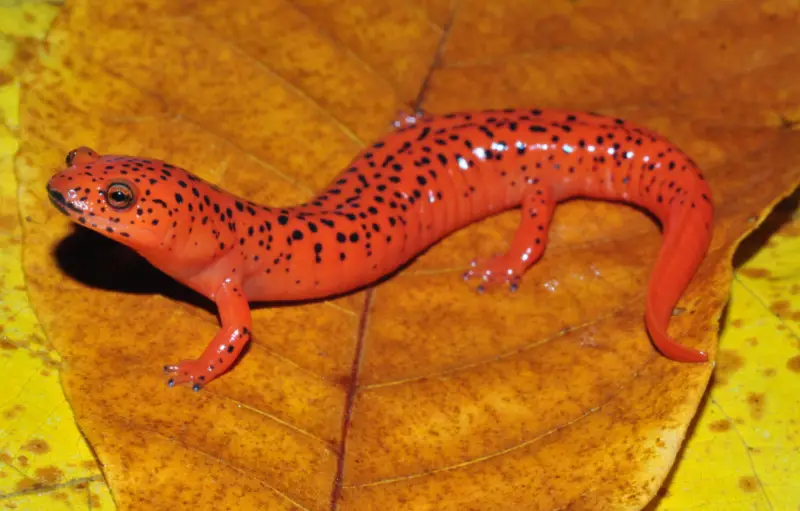
With a maximum length of 18 cm (7 in), the red salamander (Pseudotriton ruber) is distinguished by its short tail, short limbs, and sixteen or seventeen costal grooves. Its skin is brilliant crimson with black dots all over it. The subspecies of southern red salamander (Pseudotriton ruber vioscai) that is most frequently observed in Florida is this one.
These salamanders are found in the Florida panhandle and live in forests that are close to springs or streams. They are nocturnal feeders that mostly eat on other invertebrates and sometimes salamanders. Small animals, birds, and snakes hunt on them.
Eastern tiger salamander

With a maximum length of 33 cm (13 in), the eastern tiger salamander (Ambystoma tigrinum) is among the biggest salamanders in the United States. It is usually dark brown in color with little yellow spots and bars on its back. It has a long tail and a robust physique.
This species is found in sandy pine barrens around breeding pools in northern Florida. The Eastern Tiger Salamander spends most of its time in underground burrows where it is cool and avoids predators. However, it comes out during periods of heavy rain to feed on the larvae of insects and small crustaceans.
Many-lined salamander
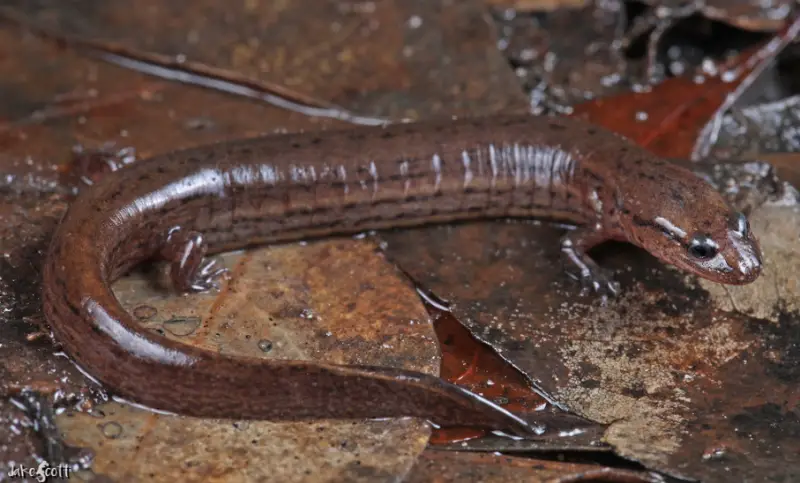
The many-lined salamander, or Stereochilus marginatus, is a tiny, mostly aquatic species that is indigenous to the US’s eastern coastal plain. Its length ranges from 6.4 to 9.5 cm. Its small head, streamlined body, and keeled tail are indicative of its aquatic habitat. The underside is yellow with darker flecks, while the dorsum is usually brown; however, some have yellowish tones.
This species, which is native to northeastern Florida, feeds on invertebrates like amphipods and isopods and favors ponds or slow-moving streams covered with sphagnum moss.
Marbled salamander
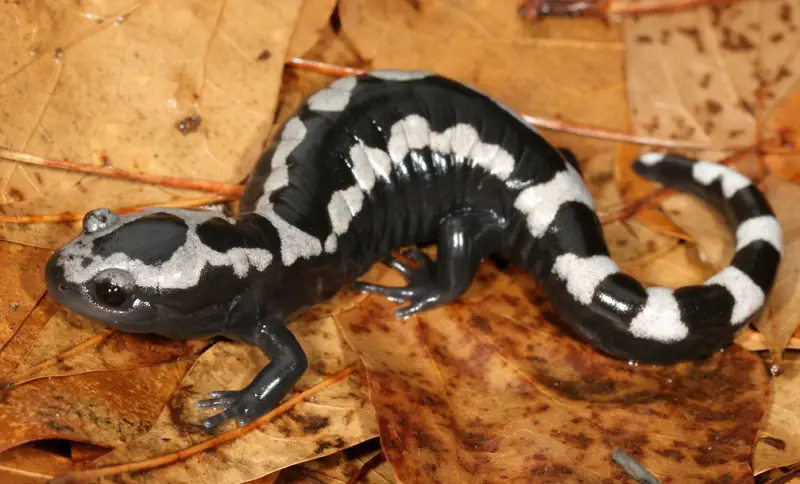
The marbled salamander (Ambystoma opacum) has eleven costal grooves and a robust body. Its normal length ranges from 9 to 10.7 cm (3.5 to 4.2 in). Depending on the species, its black body is speckled with four to seven white or gray bands; the juveniles have none.
This species is restricted to northern Florida, where it lives in deciduous, sandy forests with intermittent marshy patches. Adults eat a variety of terrestrial invertebrates, but juveniles mostly eat the larvae of spotted salamanders and zooplankton.
Bog dwarf salamander
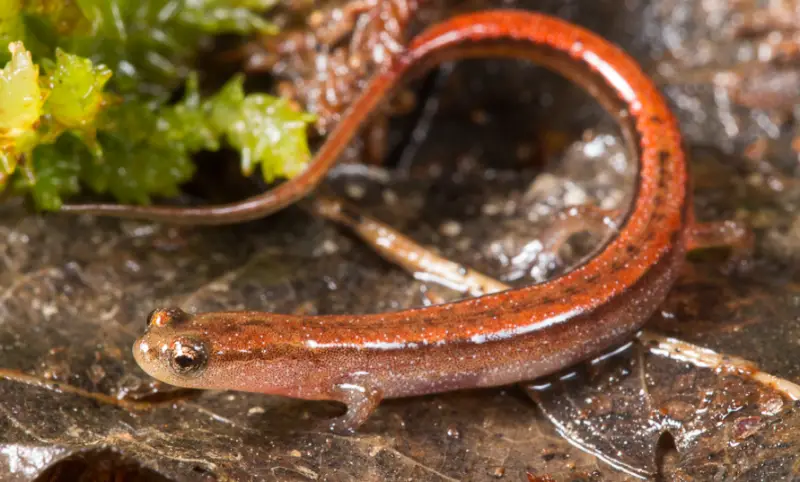
The species known as Eurycea sphagnicola, or bog dwarf salamander, is incredibly small and slender, growing up to 6.7 cm (2.6 in) in length. It has twelve to fourteen costal grooves on its hind foot and is terrestrial. Some have dorsal striping, and its back skin is bronze or coppery with a paler underside.
This salamander is found in the extreme western Panhandle of Florida. It prefers to live in wetland environments that have pitcher plants and sphagnum moss. Although the current state of protection is unknown, habitat destruction and road development are thought to be threats.
Spotted salamander
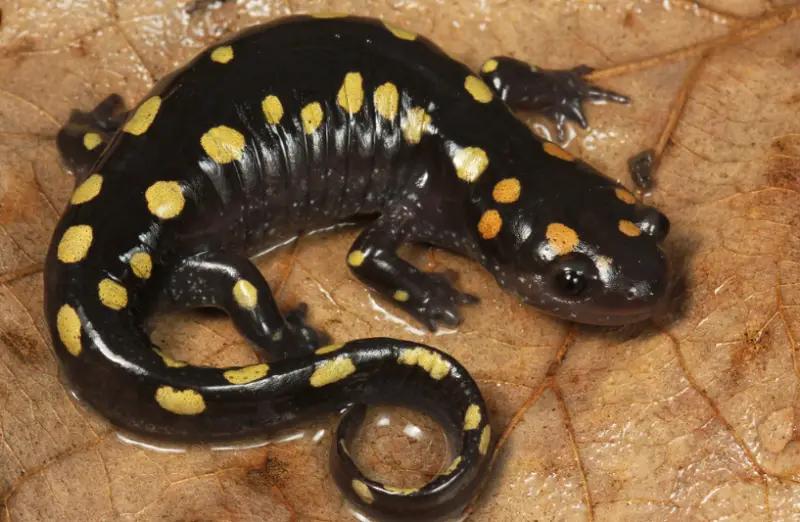
The average length of the spotted salamander (Ambystoma maculatum) is 15 to 24 cm (6 to 9.5 in). Males are somewhat thinner than females, and it has twelve costal grooves. It has a gray underbelly and two rows of orange or yellow dots down the back, giving it a hue of dark gray, brown, or black.
Spotted salamanders are found in hardwood forests and wetlands. They burrow near water and deposit their eggs in shallow pools to protect them from fish predators. Adults are hunted by predators like raccoons and weasels, but eggs and larvae may still be eaten by other salamanders or tadpoles.
One-toed amphiuma
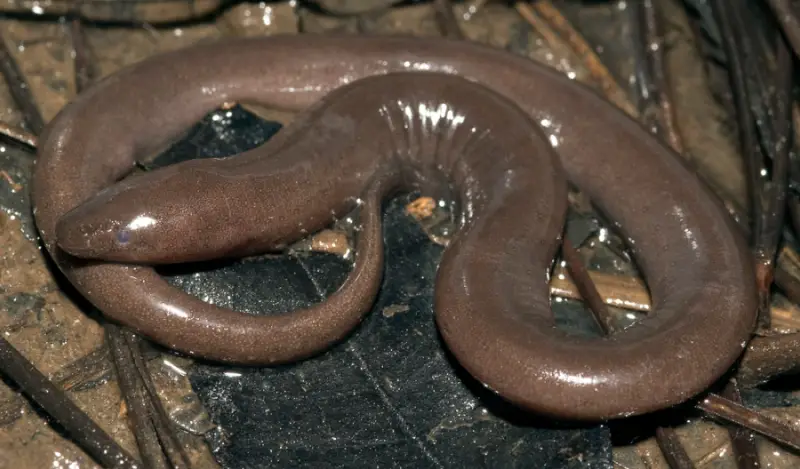
Amphiuma pholeter, the one-toed amphiuma, is a tiny species that usually grows to a length of 22 to 33 centimeters (8.7 to 13 in). It stands out from the rest of the Amphiuma genus because each of its short limbs has a single toe. Its body color varies from gray to brown, and the sexual dimorphism between the sexes is not very noticeable.
It lives on the muddy banks of ponds and streams and is native to Florida, Georgia, and Alabama. It eats aquatic arthropods and bivalve mollusks. Its life history is not well known because of its reclusive nature. As of right now, the one-toed amphiuma is considered nearly endangered.
Two-toed amphiuma
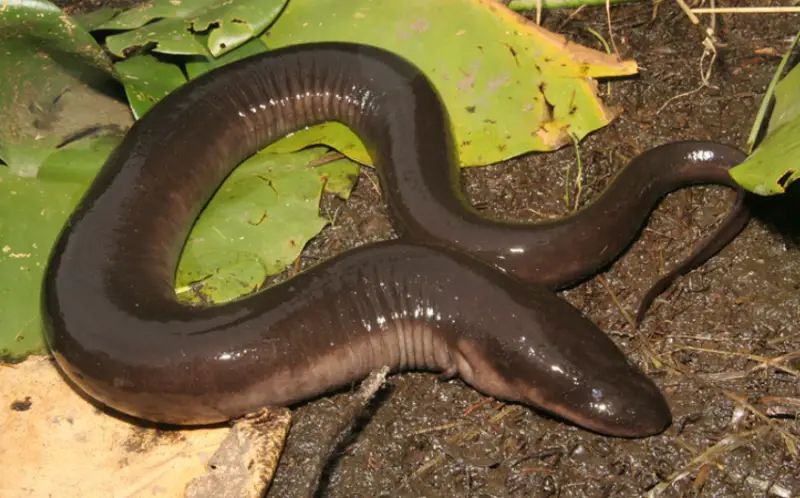
With a maximum length of 116 cm (3 feet 10 inches), the two-toed amphiuma (Amphiuma meaning) is the longest salamander species in the United States. With its small, two-toed limbs and laterally compressed tail, it resembles an eel. With a paler underside, its body is usually black or dark brown in color.
This species, which is native to the Southeast of the United States, is most often found in shallower water, where it burrows into the muddy ground. It favors environments with a lot of aquatic vegetation. The two-toed amphiuma is a nocturnal animal that mostly eats aquatic insects and their larvae, while it occasionally eats larger food like reptiles and other amphibians.
Greater siren
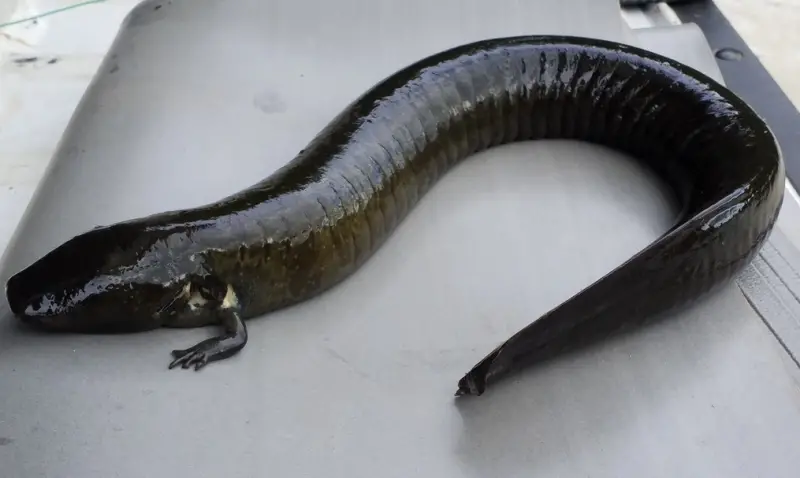
Though individuals can get larger, the greater siren (Siren lacertina) normally measures between 50 and 70 cm (1 ft 8 in to 2 ft 3.6 in). Its external gills, lack of hind limbs, and thirty-six to forty costal grooves are characteristics that indicate it is an exclusively aquatic animal. Typically, its skin is gray or olive-green with specks of yellow.
The greater siren is a native of Florida and is found in slow-moving bodies of water with lots of aquatic vegetation and muddy bottoms. It can adapt to shifting circumstances and change to exist in wetlands that are seasonal.
Southern dwarf siren
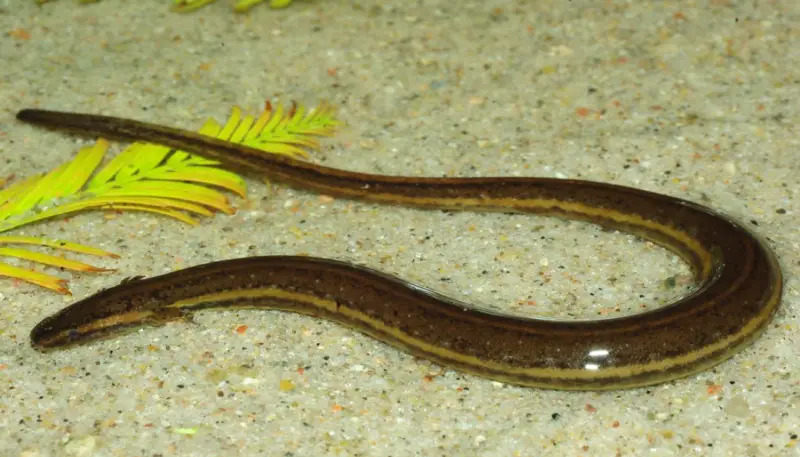
Pseudobranchus axanthus, the southern dwarf siren, is typified by having no hind limbs and between twenty-nine and thirty-seven costal grooves. Its maximum length is usually 25 cm (9.8 in). Its skin has gray to brown-black tones with yellow stripes extending from the head to the tail.
Native to Florida, this species lives in marshes, ditches, and swamps where it is frequently surrounded by water hyacinths. The southern dwarf siren will eat anything that fits in its mouth, but it mostly feeds on ostracods, amphipods, and chironomids.
Everglades dwarf siren
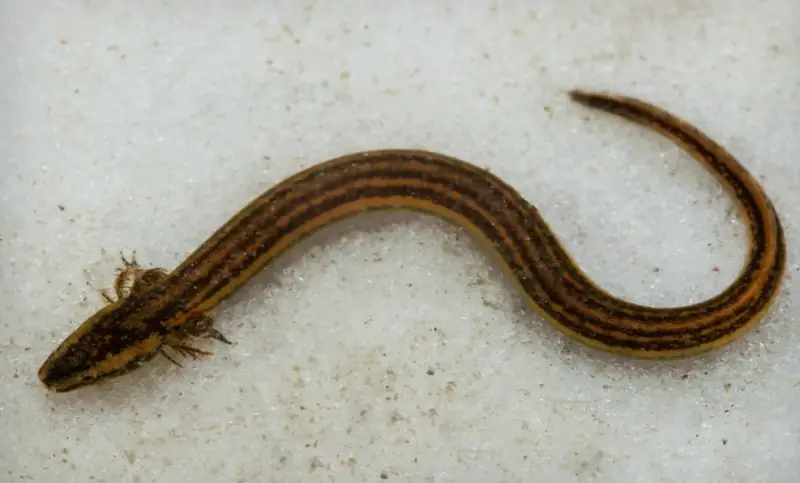
A subspecies of the southern dwarf siren, the Everglades dwarf siren (Pseudobranchus axanthus belli) is native to the Florida marshes, swamps, and plains surrounding Lake Okeechobee.
Its short, three-toed forelimbs, external gills, and costal grooves, which are adaptations for an aquatic lifestyle, range from twenty-nine to thirty-three on average. The underbelly is gray, and the coloring is often brown with a lighter dorsal stripe. Amphipods, ostracods, and oligochaetes make up its food.
Northern dwarf siren
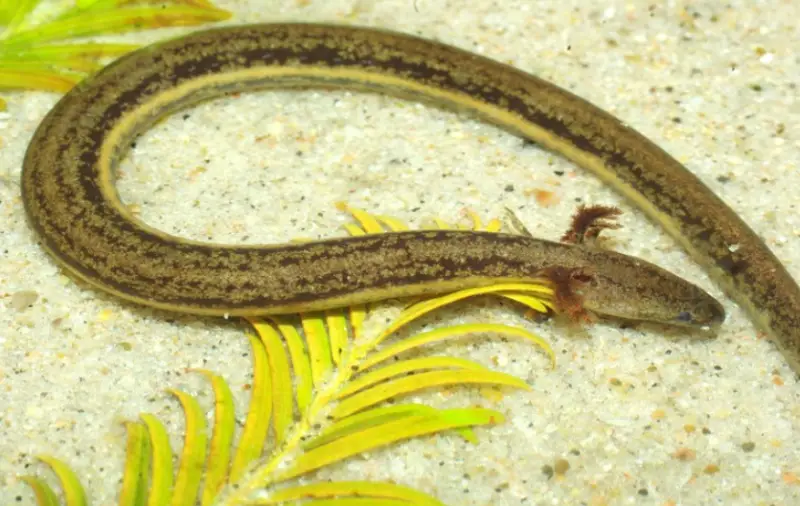
Pseudobranchus striatus, sometimes known as the northern dwarf siren, is the smallest species in the Pseudobranchus genus, usually reaching lengths of 10 to 25 cm (4 to 9.8 in). This species is distinguished by its lack of hindlimbs, three-toed forelimbs, and external gills. Its body is slender, its tail is compressed laterally, and its color is often black or brown with yellow stripes extending from the head to the tip of the tail.
The northern dwarf siren is a native of the Southeast United States and is widely distributed throughout Florida. It usually inhabits marshes or small ponds that are home to water hyacinths. Invertebrates from the substrate make up its food. In order to withstand harsh conditions during droughts, it buries itself in the muddy substrate and creates a mucus cocoon.
Lesser siren
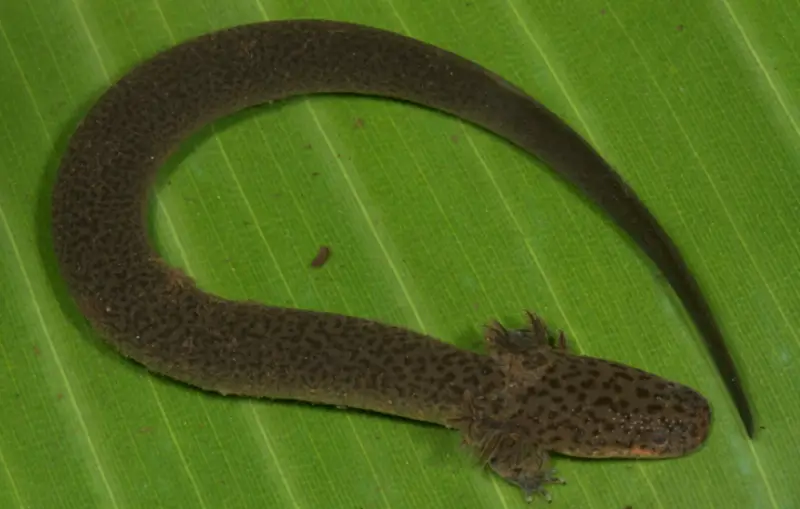
A totally aquatic salamander, the lesser siren (Siren intermedia) reaches a maximum length of 69 cm (2 feet 3 inches). It is primarily found in aquatic environments, with the exception of severe droughts, and possesses neotenic characteristics such as external gills and hindlimb absence. Lesser sirens are usually olive-green to black in color, with four toes on each forelimb.
The lesser siren is found in the northern part of Florida and is native to the eastern United States and Mexico. It lives in warm, shallow waters that are full of flora, including marshes and slowly flowing backwaters. The larvae and juveniles of aquatic plants stay put after the female lays her eggs there to feed on zooplankton and fend off predators.
Reticulated siren

Discovered in 2018, the reticulated siren (Siren reticulata) is located in southwest Georgia, Alabama, and the Florida Panhandle. With its unique reticulated pattern and maximum growth of 60 cm (2 feet), it is commonly referred to as the “leopard eel.”
This species inhabits freshwater marshes and streams, and its huge external gills resemble Christmas trees. It also has a small head. Pollution and habitat loss are two possible risks, while the state of its protection is unknown.
Rusty mud salamander
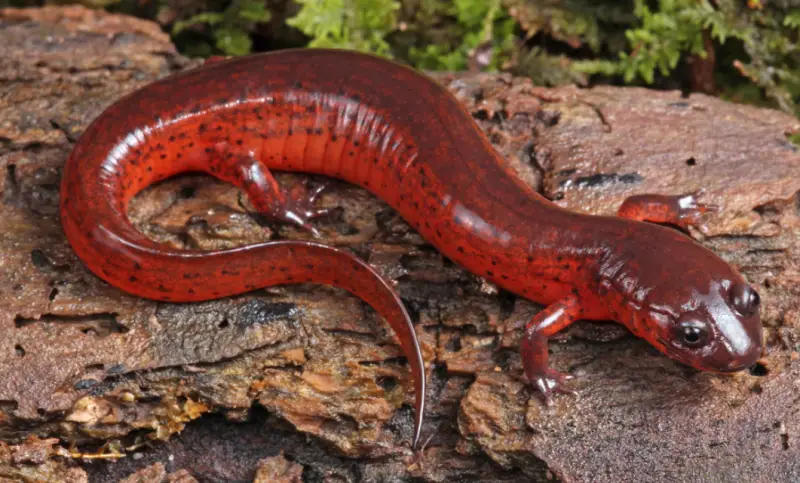
Pseudotriton montanus floridanus, often known as the rusty mud salamander, is a shy species that inhabits muddy swamp and stream habitats in northern Florida. At 12 centimeters (4.7 inches) in length, it has short limbs and a robust body.
It can be distinguished from other subspecies by its reddish-brown skin, since they tend to be deeper in color and do not have dorsal markings. The bottom has sporadic dots and is pinkish-orange in color. Its ecology is little understood, and its current state of protection is uncertain.
Gulf Coast mud salamander
